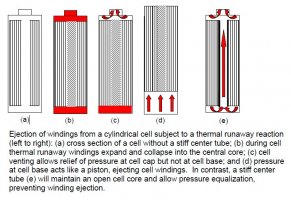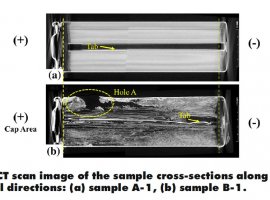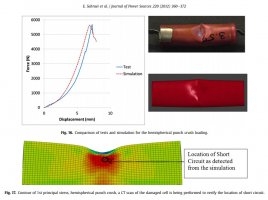The OP's issue is clearly cell a critical failure in the middle of the cell with nothing to do with the ends of the cell.
As not2bme pointed out above, the most likely cause is physical impact.
A dent, etc might have been concealed if the cell's shrink wrap sprung back to the "normal" shape after impact.
Replacement of that cell will likely fix the issue for the OP.
The damaged cell should be put somewhere fireproof asap & discharged to zero (safe then) with eg a 100 ohm resistor.
As mentioned already, while is has any significant charge it is a high fire risk.
Given the shape & orientation of the heat/damage, my opinion is nearby cells would be unharmed & at most got a few degC warmer (harmless).
If the burn had faced other cells, then agree adjacent cells might have suffered.
As not2bme pointed out above, the most likely cause is physical impact.
A dent, etc might have been concealed if the cell's shrink wrap sprung back to the "normal" shape after impact.
Replacement of that cell will likely fix the issue for the OP.
The damaged cell should be put somewhere fireproof asap & discharged to zero (safe then) with eg a 100 ohm resistor.
As mentioned already, while is has any significant charge it is a high fire risk.
Given the shape & orientation of the heat/damage, my opinion is nearby cells would be unharmed & at most got a few degC warmer (harmless).
If the burn had faced other cells, then agree adjacent cells might have suffered.






